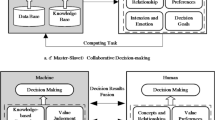Abstract
Most conventional object tracking algorithms are implemented on general-purpose processors in software due to its great flexibility. However, the real-time performance is hard to achieve due to the inherent characteristics of the sequential processing of these processors. To tackle this issue, a reconfigurable system-on-chip (rSoC) platform with microprocessors and FPGAs is applied in this paper. To simplify the hardware/software interface, a Belief–Desire–Intention (BDI)-based multi-agent architecture is proposed as the unified framework. Then an agent-based task graph and two heuristic partitioning methods are proposed to partition the hardware and software on an rSoC platform. Compared to the module-based architecture, this BDI-based multi-agent architecture provides more efficiency, flexibility, autonomy, and scalability for the real-time tracking systems. A particle swarm optimization (PSO)-based object detection and tracking algorithm is applied to evaluate the proposed architecture. Extensive experimental results of object tracking demonstrate that the proposed architecture is efficient and highly robust with real-time performance.









Similar content being viewed by others
References
Agent-Oriented Software Pty Ltd: JACK Manual (v4.1). http://www.agent-oriented.com, (2003)
Baleani, M., Gennari, F., Jiang, Y., Patel, Y., Brayton, R.K., Sangiovanni-Vincentelli, A.: HW/SW partitioning and code generation of embedded control applications on a reconfigurable architecture platform. In: Proceedings of the Tenth International Symposium on HW/SW Codesign (2002)
Brazier, F., Keplicz, B.D., Jennings, N., Treur, J.: Desire: modelling multi-agent systems in a compositional formal framework. Int. J. Cooperative Inf. Syst. 6(1), 67–94 (1997)
Carrascosa, C., Bajo, J., Julian, V., Corchado, J.M., Botti, V.: Hybrid multi-agent architecture as a real-time problem solving model. Expert. Syst. Appl. 34(1), 2–17 (2008)
Davis, J., Sharma, V.: Robust detection of people in thermal imaging, In: 17th International Conference on Pattern Recognition (ICPR’04), 713–716 (2004)
d’Inverno, M., Kinny, D., Luck, M., Wooldridge, M.: A formal specification of dMARS. In: Proceedings of the 4th International Workshop on Agent Theories, Architecture, and Language, vol. 1365 of LNAI, pp. 155–176 (1998)
Eberhart, R., Kennedy, J.: A new optimizer using particles swarm theory. In: Proc. Sixth International Symposium on Micro Machine and Human Science, IEEE Service Center, Piscataway, NJ (1995)
Feyrer, S., Zell, A.: Detection, tracking, and pursuit of humans with an autonomous mobile robot. In: Proceedings of the International Conference on Intelligent Robots and Systems (IROS’99), pp. 864–869 (1999)
Fleischmann, J., Buchenrieder, K., Kress, R.: Codesign of embedded systems based on java and reconfigurable hardware components. In: Design Automation and Test in Europe (1999)
Froba, B., Kublbeck, C.: Face detection and tracking using edge orientation information, SPIE Vis. Commun. Image Process. 4310, 583–594 (2001)
Jennings, N.R., Wooldridge, M.: Agent-oriented software engineering. Handbook of Agent Technology. In: Bradshaw, J. (ed.) AAAI/MIT Press, Cambridge (2000)
Kearney, D., Veldman, G.: A concurrent multi-bank memory arbiter for dynamic IP cores using idle skip round robin. In: Proceedings of IEEE International Conference on Field-Programmable Technology (FPT ‘03), pp. 411–414, Tokyo, Japan (2003)
Kendall, E.A., Malkoun, M.T., Jiang, C.H.: A methodology for developing agent based systems. In: Proceedings of the First Australian Workshop on DAI: Distributed Artificial Intelligence: Architecture and Modeling, Lecture notes in Computer Science, vol. 1087, pp. 85-99 (1995)
Kinny, D., Georgeff, M., Rao, A.: A methodology and modeling technique for systems of BDI agents. In: Proceedings of the 7th European workshop on modeling autonomous agents in a multi-agent world, pp. 56-71 (1996)
Li, Y., Callahan, T., Darnell, E., Harr, R., Kurkure, U., Stockwood, J.: Hardware–software co-design of embedded reconfigurable architectures. In: Design Automation Conference (2000)
Meng, Y.: A dynamic self-reconfiguration mobile Robot navigation system. In: IEEE/ASME International Conference on Advanced Intelligent Mechatronics, pp. 1541–1546 (2005)
Meng, Y.: An agent-based reconfigurable system-on-chip architecture for real-time systems, In: 2nd International Conference on Embedded Software and Systems, Xian, China (2005)
Micacchi, C., Cohen, R.: A multi-agent architecture for robotic systems in real-time environments. Int. J. Robot. Autom. 21(2), 82–90 (2006)
Niemann, R., Marwedel, P.: An algorithm for HW/SW partitioning using mixed integer linear programming. Des. Autom. Embed. Syst 2(2), 165–193 (1997)
Osterling, A., Benner, T., Ernst, R., Hermann, D., Scholz, T., Ye, W.: Hadware/Software Co-Design: Principles and Practice. Kluwer Academic Publishers, Dortrecht (1997)
Quinn, H., Leeser, M., King, L.: Dynamo: a runtime partitioning system for FPGA-based HW/SW image processing systems. Spec. Issue J. Real-Time Image Process. 2(4), 179–190 (2007)
Raja, Y., McKenna, S.J., Gong, S.: Tracking and segmenting people in varying lighting conditions. In: Proc. 3rd Int. Conf. on Automatic Face and Gesture Recognition, pp. 228–233 (1998)
Rohr, K.: Towards model-based recognition of human movements in image sequences. CVGIP Image Underst. 59(1), 94–115 (1994)
Rowley, H.A., Baluja, S., Kanade, T.: Neural network-based face detection. IEEE Trans. Pattern Anal. Mach. Intell. 20(1), 23–38 (1998)
Saha, D., Mitra, R.S., Basu, A.: HW/SW partitioning using genetic algorithm. In: Proc. of 10th Intern. Conference on VLSI Design, pp. 155–160 (1997)
Scalcra, S.M., Vazques, J.R.: The design and implementation of a context switching FPGA. In: IEEE Symposium on FPGAs for Custom Computing Machines, pp. 78–85 (1998)
Sckanina, L., Ruzicka, R.: Design of the special fast reconfigurable chip using common FPGA. In: IEEE Proc. of Design and Diagnostics of Electronic Circuits and Systems, pp. 161–168 (2000)
Viola, P., Jones, M.: Robust real-time object detection. In: Proceedings of the Second International Workshop on Statistical and Computational Theories of Vision (2001)
Walker, S.S., Brennan, R.W., Norrie, D.H.: Holonic job shop scheduling using a multiagent system. IEEE Intell. Syst. 20(1), 50–57 (2005)
Wiangton, T., Cheung, P.Y.K., Luk, W.: Comparing three heuristic search methods for functional partitioning in hardware–software codesign. Des. Autom. Embed. Syst. 6(4), 425–449 (2002)
Wood, M.R.: Multiagent Systems Engineering: A Methodology for Analy-sis and Design of Multiagent Systems. PhD thesis, Air Force Institute of Technology (2000)
Zheng, Y., Meng, Y.: Adaptive object tracking using particle swarm optimization. In: IEEE International Symposium on Computational Intelligence in Robotics and Automation, Jacksonville, Florida, USA (2007)
Author information
Authors and Affiliations
Corresponding author
Rights and permissions
About this article
Cite this article
Meng, Y. Agent-based reconfigurable architecture for real-time object tracking. J Real-Time Image Proc 4, 339–351 (2009). https://doi.org/10.1007/s11554-009-0116-2
Received:
Accepted:
Published:
Issue Date:
DOI: https://doi.org/10.1007/s11554-009-0116-2




